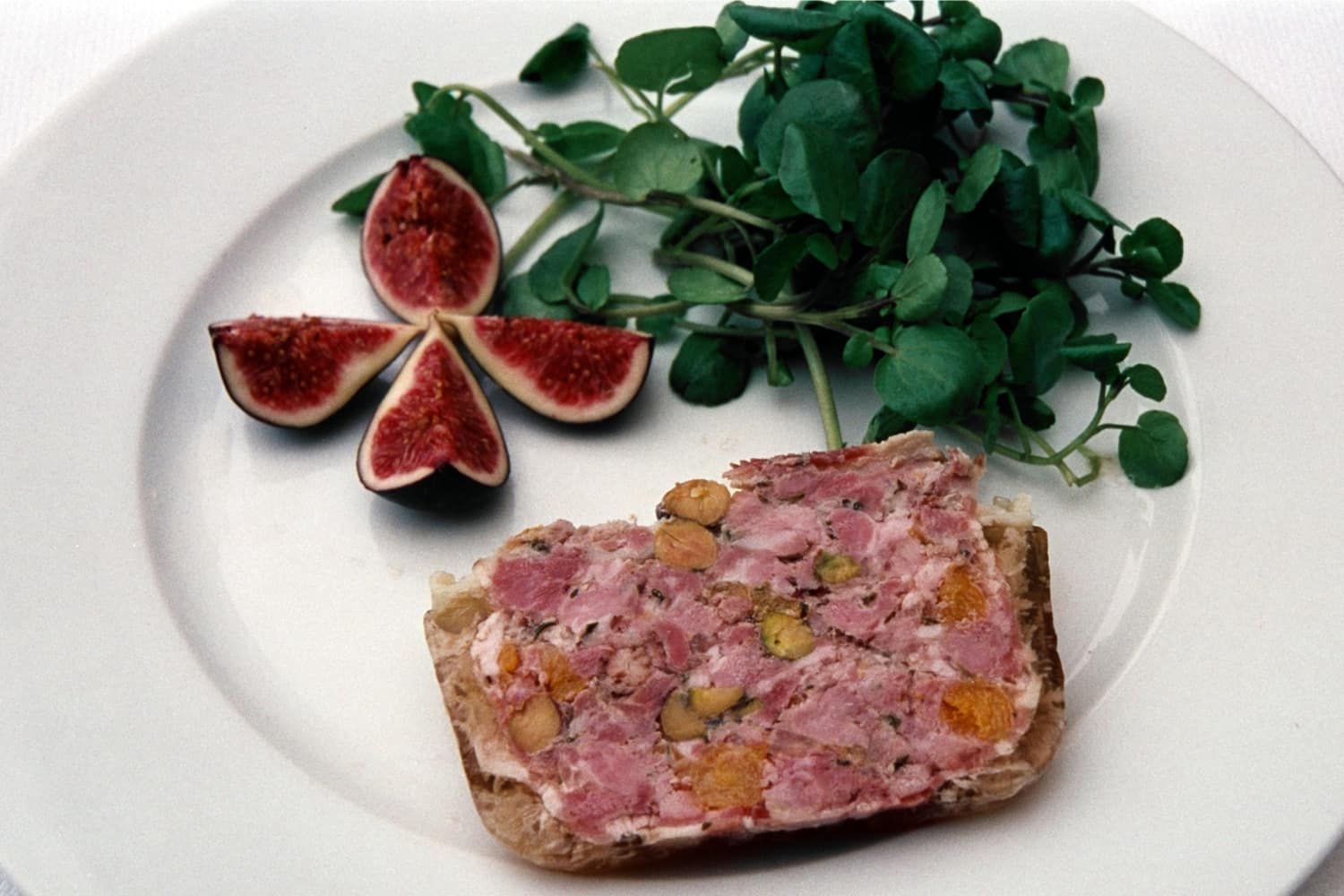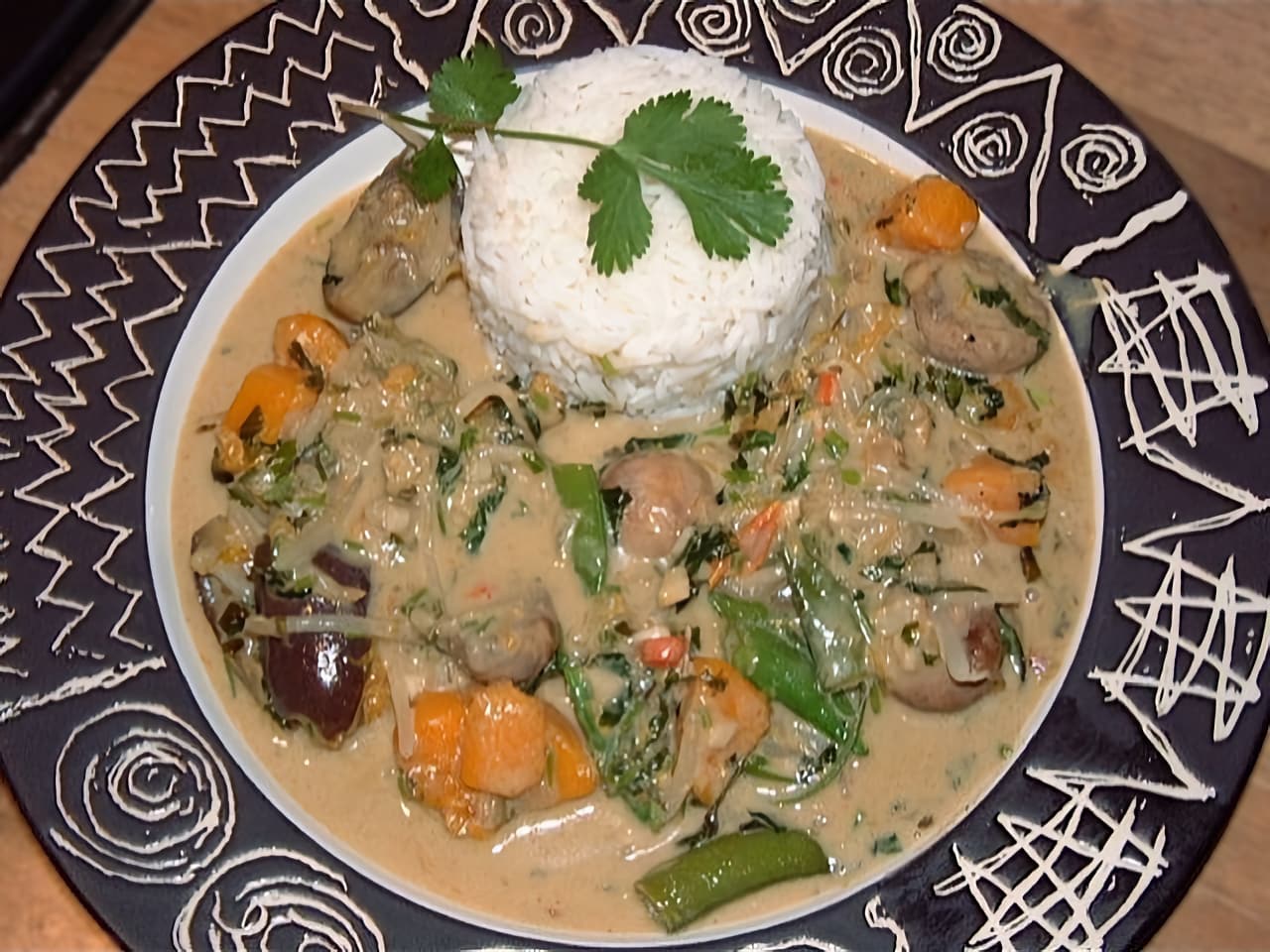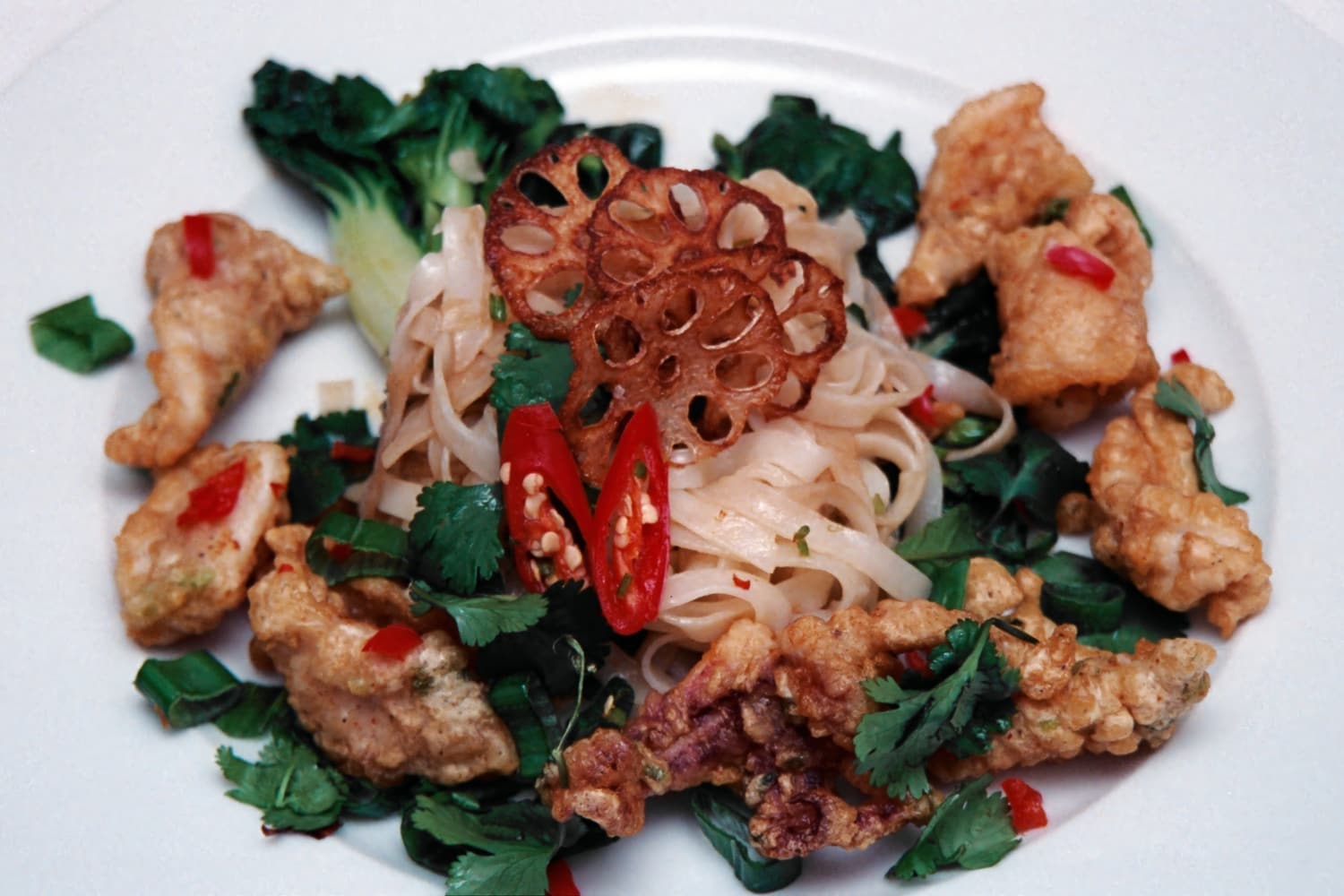Swiss Chard and Ricotta Ravioli with Garlic Prawns
I adore the flavour of swiss chard (silverbeet) in pasta and pastry dishes.The addition of garlic prawns makes this dish even more delicious.
4 - 6 Portions
Prep: 30 minutes
Cook: 10 minutes
Cook: 10 minutes
Ingredients
Filling
- 2 tbsp olive oil
- 250g swiss chard (silverbeet), coarse stem trimmed and roughly chopped
- 2 garlic cloves, finely chopped
- 3 spring onions, finely chopped
- 250g ricotta
- 3 tbsp grated parmesan
- 3 tbsp basil, shredded
- generous pinch paprika
- 1/2 tsp grated nutmeg
- maldon salt and freshly ground black pepper
Herb Duck Egg Pasta
- 500g Tipo flour (00) or bread flour (000)
- 3 duck eggs
- 2 duck egg yolks (if using hen eggs simply add an extra yolk)
- 1 tbsp olive oil
- 1 tbsp sage leaves, shredded
- 1 tbsp parsley, finely chopped
- pinch salt
Garlic Prawns
- 180ml extra virgin olive oil
- 1/2 tsp dried chilli flakes (optional)
- 3-4 garlic cloves, finely
- 24-30 raw prawns, peeled and deveined
- maldon salt and freshly ground black pepper
To Serve
- 3 tbsp pine nuts, toasted
Method
- Filling: Heat the olive oil in a pan over a moderate high heat, add the garlic and swiss chard and cook until the swiss chard has wilted (toss regularly with a wooden spoon). Remove from the heat and allow to cool briefly. Squeeze out the excess liquid, finely chop the swiss chard and place in a bowl with the remaining ingredients, mix until well incorporated. Season to taste. Cover the filling and refigerate for at least 30 minutes (can be made a day in advance).
- Pasta by Food Processor:Place all the ingredients in a food processor and process until you have a moist breadcrumb like consistency. Tip the mixture out onto a work surface and bring together with your hands so that you have a ball of dough. If it is dry add a little water and if wet add some more flour. Knead the mixture for a couple of minutes until it has some elasticity. Separate the dough into 4 balls cover with cling film and place in the fridge for at least 30 minutes.
- By Hand: Place the flour out onto a work top and make a well in the centre. In a bowl beat the eggs, oil and herbs together, pour this mixture into the well in the centre of the flour. Using your your hands bring the flour into the egg mixture and gradually combine it until you have a dough. Knead the dough for couple of minutes until it is firm and has elasticity. Separate the dough into 4 balls, cover with cling film and place them in the refrigerator for at least 30 minutes
- Ravioli: Remove the dough from the refrigerator and starting with one ball of dough roll it out so that it is around 1cm-1.5 cm thick. Set a pasta machine to the lowest setting and pass the pasta through it 3 times. Then set the pasta machine to a higher setting and pass it through, then reduce the setting and repeat the process to the last or second last setting so that the pasta is very thin and long. If the pasta becomes sticky dust it with a little flour. Cut the sheet of pasta in half and hang the pasta up on a wooden pasta holder or weighted broom handle. Repeat this process with the remaining pasta.
- Lay one sheet of pasta out on a lightly floured work top. Place a generous teaspoon of the filling 3cm in from the top and side in the left hand corner of the pasta. Repeat this process every 3 cm leaving 3 cm at the end of the pasta. Begin the second row 3 cm down from the top row and repeat this process again (continue this until you have several rows and the pasta sheet is full). Place a second sheet of pasta over the pasta with the filling carefully. Press around the fillings so that the filling is enclosed by the pasta. Cut the pasta with a small pizza cutter, knife, ravioli cutter or small shape cutter into individual ravioli. Place the ravioli on a lightly floured tray and place it in the fridge until you are ready to cook. Repeat this process with the remaining pasta. *If you have a ravioli mould dust a pasta sheet with flour and place it over the base loosely. Place generous teaspoons of the filling in each section. Place a second sheet of ravioli over the filling and roll over the top of the pasta with a rolling pin so as to cut around each ravioli. Turn the ravioli out onto a lightly floured surface.
- To Cook:Bring a large saucepan of water to the boil with a little olive oil. Cook a few pieces of the ravioli at a time until they rise to the top (this should take around a minute). Remove the ravioli and place the ravioli directly into warm serving bowls.
- Garlic Prawns:Heat the olive oil in a large saucepan over a moderate-high heat. Add the chilli flakes (optional), garlic and prawns to the pan.Cook for a couple of minutes so that the prawns are pink. Season with salt and pepper. Scatter the prawns over the ravioli and pour over the garlic oil. Serve at once.
- To Serve:Scatter the pine nuts over the ravioli. Serve.
Recipe Ideas

Rabbit Terrine

8-12 Portions

Prep: 45 minutes plus 6-12 hours marinating
Cook: Cooking Time 1 1/2-2 hours

Thai Rabbit Curry

4 Portions

Prep: 10 minutes
Cook: 10 minutes

Salt and Pepper Squid with Pak Choi and Rice Noodles

6 Portions

Prep: 20 minutes
Cook: 15 minutes
Keywords:
swiss chard
silverbeet
ravioli
pasta
egg
food
vegetables
prawns
seafood
cooking
ricotta
cuisine
eating
Categories:
pastarice-seafood
 Recipe
Recipe